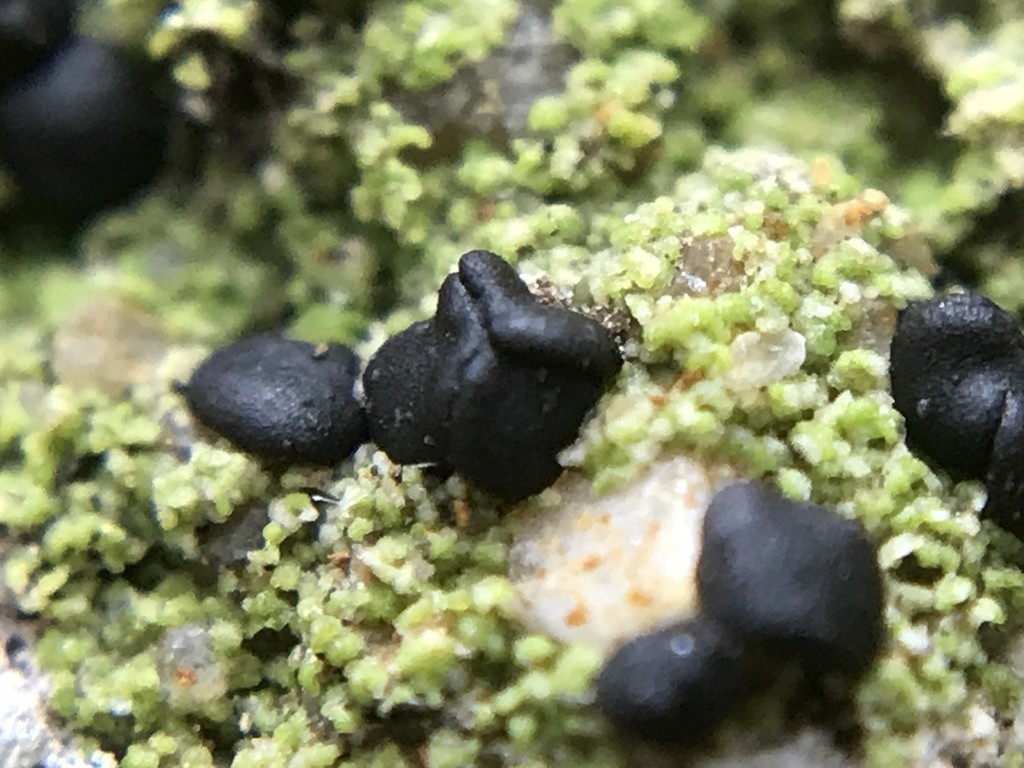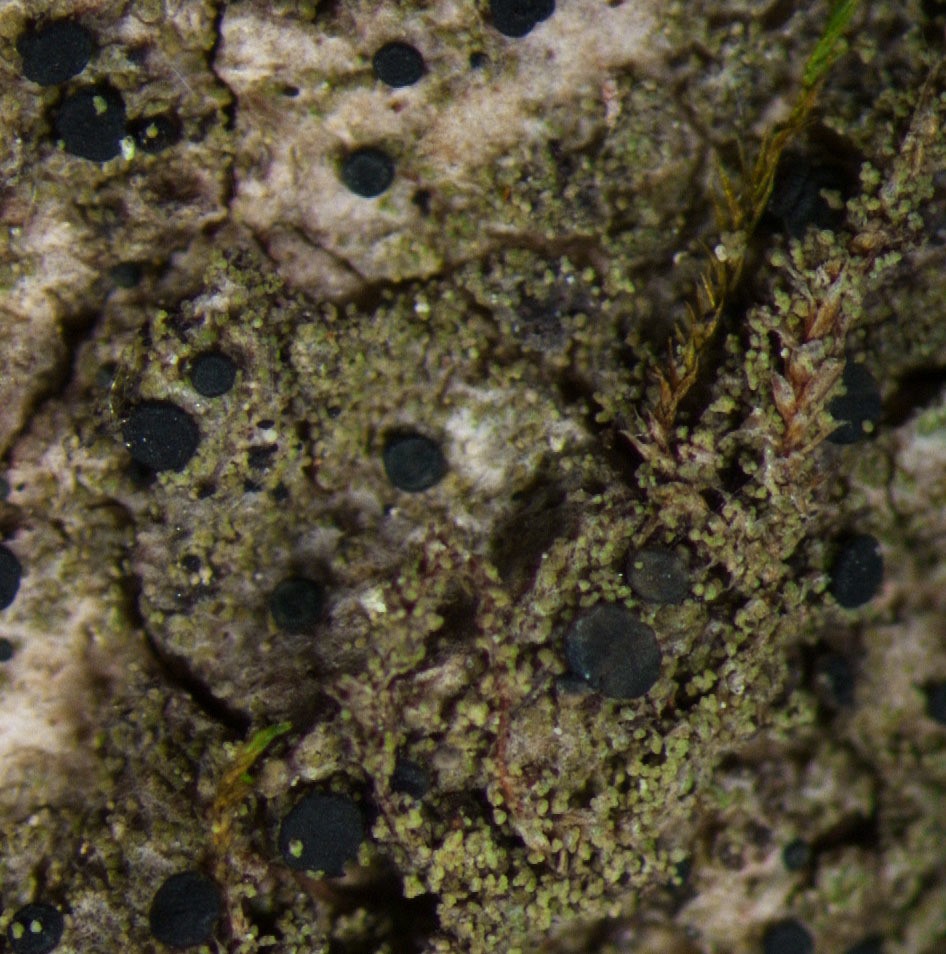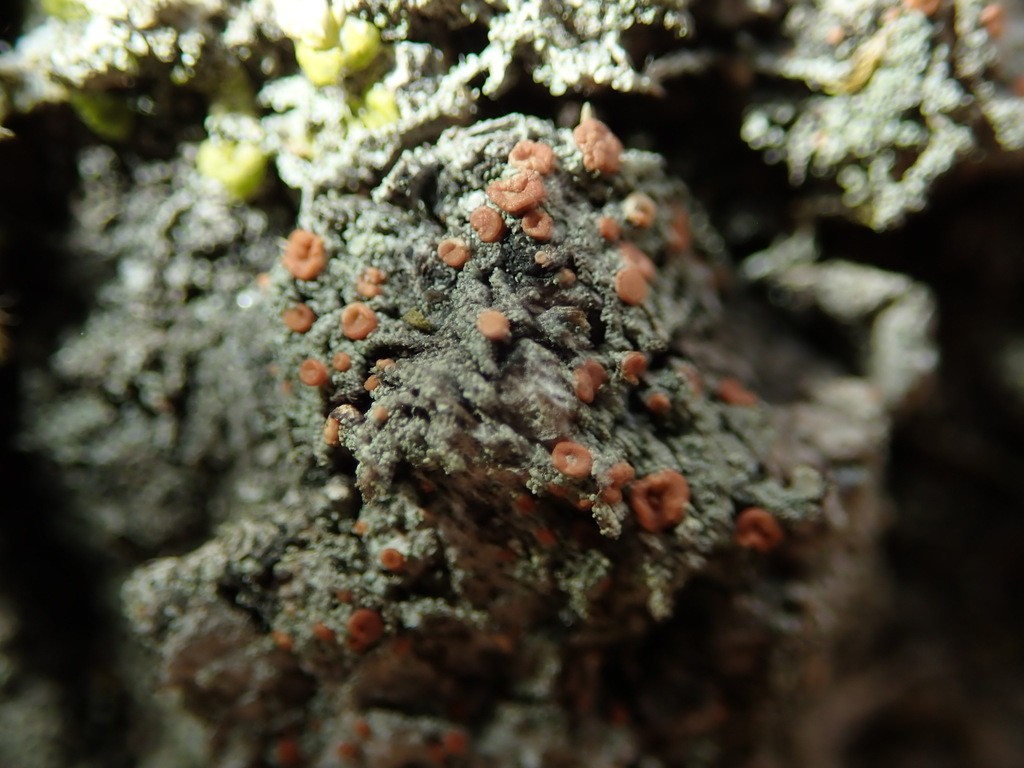Dot lichens
Scientific name: Bacidia
Dot lichens
Scientific name: Bacidia
 Photo By Jennifer Rycenga , used under CC-BY-4.0 /Cropped and compressed from original
Photo By Jennifer Rycenga , used under CC-BY-4.0 /Cropped and compressed from original Description
Dot lichens are a unique group of lichens, often recognized by their small, dot-like fruiting bodies. They thrive in diverse environments, typically found on rocks, tree bark, and even moss. These lichens play a crucial role in ecosystems by breaking down substrates and forming soil. Some species within this group are notable for being excellent bioindicators, helping scientists monitor environmental changes and pollution levels.

